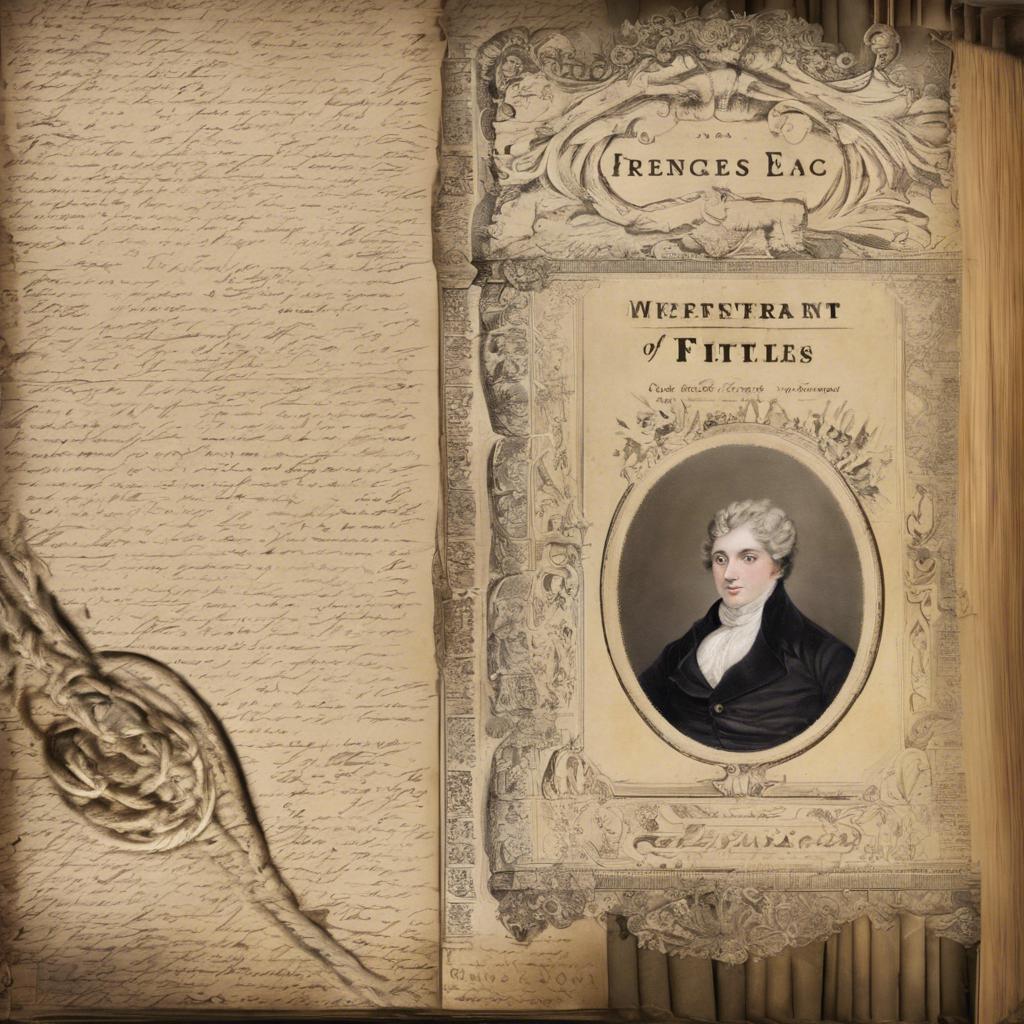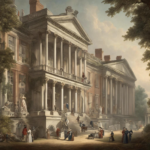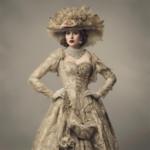In the hierarchical society of Regency-era England, titles and rank held immense importance, dictating one’s social standing and privileges. From dukes and duchesses to barons and baronesses, these titles carried with them a sense of prestige and power. Understanding the intricacies of Regency-era titles offers valuable insight into the social structures and dynamics of the time. Join us as we delve into the world of Regency era titles, exploring their origins, significance, and influence on British society during this transformative period in history.
Step Into the World of Cheryl Bolen
Dive into the enchanting stories of love, intrigue, and elegance set in the Regency Era. Cheryl Bolen's novels offer timeless romance and captivating tales that will leave you wanting more.
Explore Cheryl Bolen's Books Now
Title 1: Understanding the Importance of Regency Era Titles
During the Regency Era, titles played a crucial role in society, dictating social status, prestige, and power. These titles were not just mere labels, but symbols of lineage, wealth, and influence. The hierarchy of titles was meticulously structured, with each title carrying its own set of privileges and responsibilities.
**Titles of nobility:** In the Regency Era, titles of nobility held immense significance. They were granted by the monarch to individuals as a mark of distinction and recognition for their service or loyalty. The highest-ranking titles included dukes, marquesses, earls, viscounts, and barons, each with varying levels of authority and precedence.
**Inheritance of titles:** Titles in the Regency Era were typically inherited through primogeniture, where the eldest son would succeed to the title and estate upon the death of the current holder. This ensured the continuity of lineage and stability of the noble families. Titles could also be granted for exceptional achievements or services to the crown.
Title 2: The Hierarchical Structure of Titles in Regency England
The Hierarchical Structure of Titles in Regency England
In Regency England, the hierarchical structure of titles played a crucial role in determining one’s social status and privilege. At the top of the hierarchy were the royalty, followed by the nobility, gentry, and commoners. Titles were not just a form of address, but a symbol of power and prestige.
Titles in Regency England were hereditary and passed down through generations. They granted their holders land, wealth, and influence in society. The titles of Duke, Marquess, Earl, Viscount, and Baron were among the highest-ranking titles, with each carrying its own set of privileges and responsibilities.
One of the most coveted titles in Regency England was that of a Duke. Dukes held immense power and wealth, often owning vast estates and having significant political influence. They were addressed as ”Your Grace” and were considered to be among the most prestigious members of society.
Title 3: Navigating the Intricacies of Regency Era Titles
During the Regency Era, navigating the intricacies of titles was a crucial aspect of societal hierarchy and etiquette. Understanding the nuances of titles was essential for social climbers looking to ascend the ranks of high society. Titles such as Duke, Earl, Viscount, and Baron carried different levels of prestige and power, dictating one’s place in the regency era nicknames”>social pecking order.
One of the most esteemed titles during the Regency Era was that of a Duke. Dukes were considered to be the highest-ranking noblemen, second only to the royal family. They often owned vast estates and wielded significant political influence. Dukes were addressed as “Your Grace” and were at the top of the social hierarchy, commanding respect and admiration from all.
On the other end of the spectrum were Barons, who held the lowest noble title. Barons were often landowners with smaller estates and less political clout. Despite their lower rank, Barons still held a certain level of prestige and were addressed as “Lord.” Understanding the distinctions between these various titles was crucial for navigating the complex social landscape of the Regency Era.
Title 4: Recommendations for Proper Usage of Titles in Regency Society
It is essential to understand the proper usage of titles in Regency society to navigate the intricate social hierarchy with grace and ease. The following recommendations will guide you in the correct application of titles in various social settings:
1. Addressing Members of the Nobility:
- Always use the appropriate title when addressing members of the nobility, such as “Your Grace” for a Duke or Duchess, and “My Lord” or “My Lady” for Viscounts and Viscountesses.
- When in doubt, it is best to err on the side of formality and address individuals with their full title, such as “Lord John Smith” or ”Lady Jane Doe.”
2. Using Titles in Correspondence:
- When writing letters to individuals of higher rank, it is customary to include their full title and address them with the appropriate honorific, such as “His Lordship” or “Her Grace.”
- Always close your correspondence with the appropriate sign-off based on the recipient’s title, such as “I have the honor to be, Your Grace’s most obedient servant.”
| Title | Proper Usage |
|---|---|
| Earl/Countess | Address as “My Lord/My Lady” or “Your Lordship/Your Ladyship” |
| Marquess/Marchioness | Address as “Your Lordship/Your Ladyship” |
The Conclusion
the regency era titles were a intricate web of hierarchy and protocol, shaping the social structure and defining the status of individuals in society. From dukes and duchesses to viscounts and barons, each title carried its own prestige and responsibilities. Understanding the nuances of these titles provides a glimpse into the intricate world of the regency era aristocracy. As we reflect on this period of history, may we appreciate the significance of these titles in shaping the culture and social norms of the time. Thank you for joining us on this journey through the regency era titles.


